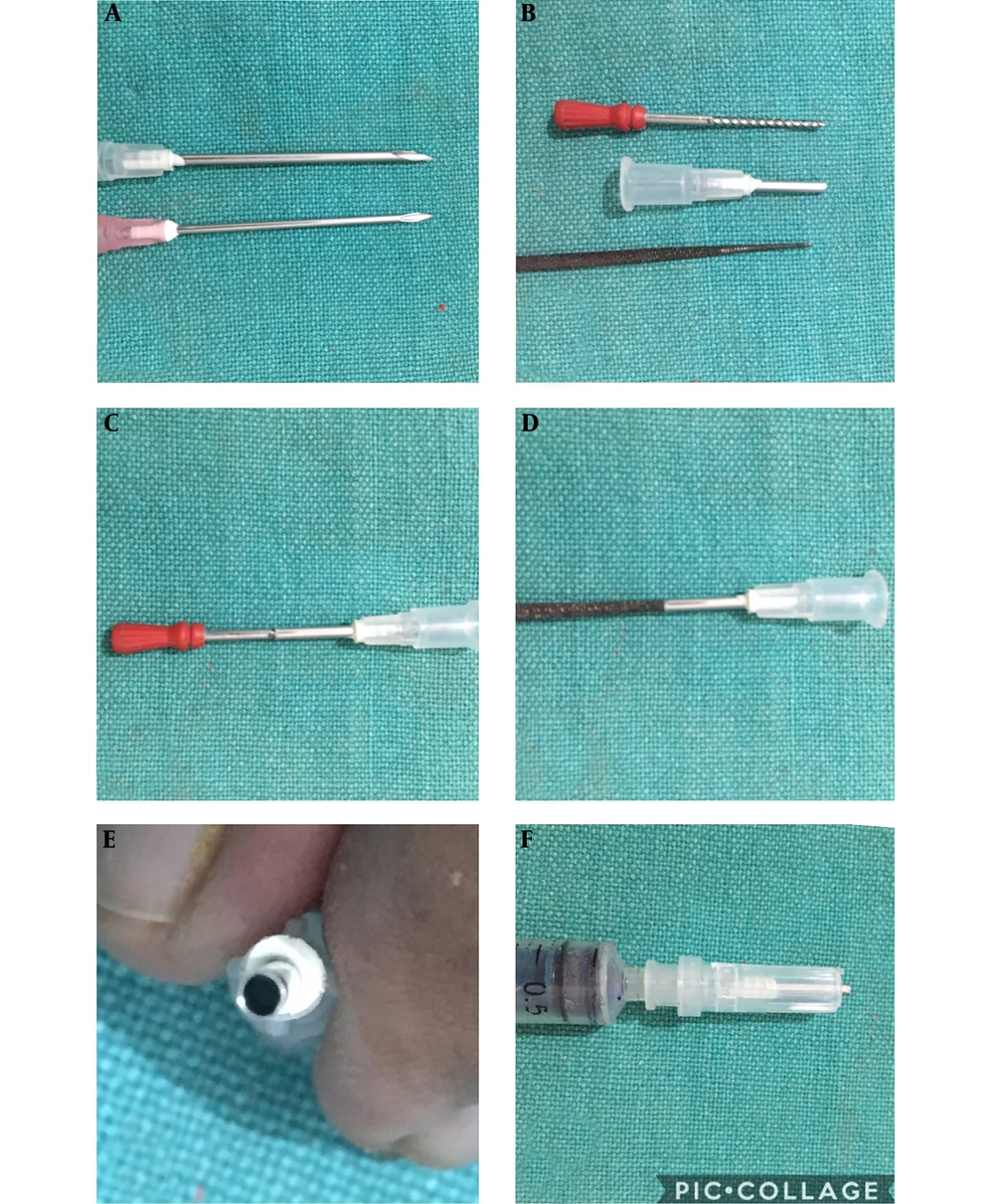Dear editor,
Vitiligo remains a major challenge in dermatology, and many patients experience an incomplete therapeutic response to the conventional medical therapy (1). As a result, several surgical interventions are developed for vitiligo, such as ultra-thin thiersch grafting, epidermal grafting, and melanocytes transplantation, by both cultured and noncultured techniques (2). However, some small residual lesions remain persistent over the treated sites even after proper medical and surgical treatments (3), which indicates that a large size graft is not necessary. In order to achieve better cosmetic results, a mini punch graft should be used (4, 5). However, mini punches are not readily available. Meanwhile, the profit margin of producing punch is small; hence, manufacturers are not incentivized to produce such devices, which resulted in the low supply of punches to the market. In response to this situation, disposable punches can be produced in clinics using a hypodermic needle. Here I suggest a simplified method for procuring the punch in clinics as an economical alternative to the disposable mini needle punch in such situations.
For preparing mini punch, the following items are needed: hypodermic needle, needle holder, watchmaker conical mini file, dental bur, and manual dermabrader. The inner and outer diameters of 14, 15, 16, 18 gauge hypodermic needles are 1.6/2.1, 1.4/1.8, 1.2/1.6, and 0.8/1.2 mm, respectively. These needles are readily available. Here I selected 16 and 18G needles (Figure 1A). The distal part of the needle was broken gently using a needle holder. Afterward, it was rubbed gently for few strokes on a flat surface of a mini file or a manual dermabrader to smoothen the broken punching end of the needle. Then, a dental burr and a mini conical file were inserted into the needle from its broken part to make the lumen round as it gets distorted little bit after breaking the needle shaft. In the following, the needle was rotated over the conical surface of the file to sharpen the punching end of the needle (Figure 1B-D). After this, the outer surface of the needle was also rubbed from all-around gently on the file. On completion of the sharpening of the needle, the diameters of punches were found uniformly round on a measuring scale (Figure 1E). Its diameter was found 1.4 mm and 1.0 mm of 16 G and 18G needles, respectively. This needle punch can be handled with a syringe, and its punching end can be guarded with the cap of the needle. Thus, a hypodermic needle punch can be prepared in case of emergency, and it is a good economical alternative to the disposable punch, after chemical disinfection, for mini punch grafting in vitiligo (Figure 1F).

